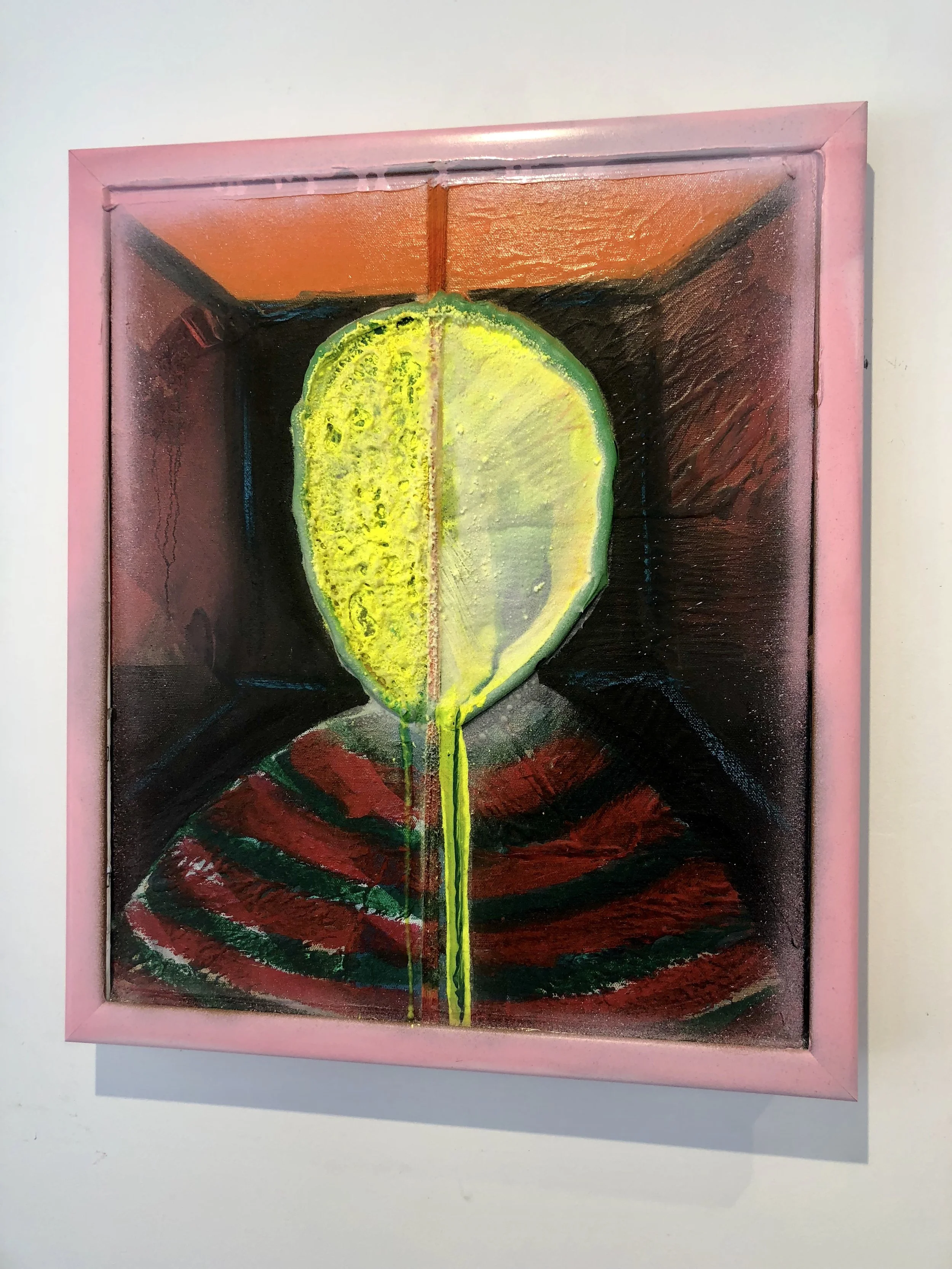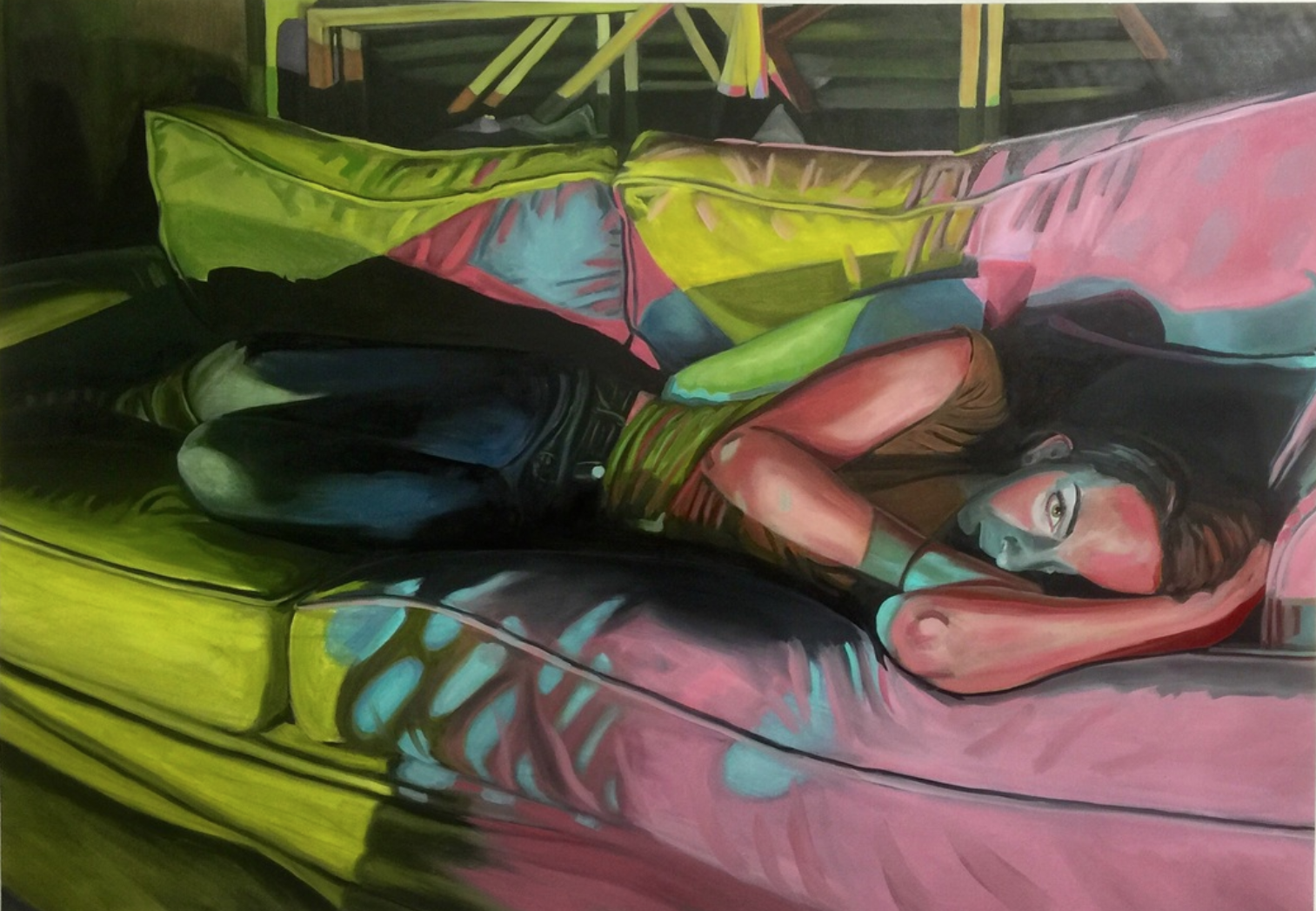INTERVIEW: KUROSH YAHYAI
INTERVIEW WITH ARTIST KUROSH YAHYAI
EXHIBITION: KUROSH YAHYAI
JUNE 7- JUNE 16, 2018 | ARTIST RECEPTION: JUNE 7, 2018 | 7-9P
1805 COLUMBIA ST. 92101
Residency work by Kurosh Yahyai 2018
While in residence at 1805 Gallery, Kurosh Yahyai has produced a new body of work that explores anxiety as a universal human condition. Yahyai paintings and sculptures challenge traditional notions of portraiture as a truthful representation of an individual and offers an alternative visual language to discuss a shared psychological condition.
How has anxiety affected your life and art practice?
(KY) Anxiety has always been an interest of mine. When I was a child I remember not really knowing what the term anxiety meant, yet I remember having thoughts and feelings that I would later associate to the term or definition of anxiety. I also understood that it is such a fundamental/primal mental state that all humans experience. It doesn’t matter what experiences, background, ethnicity, social status people come from. It is all relative and anxiety is a common thread that makes us all very human. In my life I have learned to understand the things I can control and not worry about the rest. This is easier said than done. My art practice has helped me understand my thoughts and mental process when working through anxieties in my own life. It is a tool that always to pour out my thoughts and feelings when my mind is full.
How do your expressional figures effectively approach anxiety?
(KY) Whether I am painting in a representational or abstract style, the figure is generally expressionless. These expressionless faces allow the viewer to place their own feelings and potentially anxieties into the work. I understand that not everyone will feel this way, but I do believe that everyone has anxiety in some form or another. I also feel that the viewer expects to see a face when looking at a “portrait” and when the face is blank it creates a sense of discomfort or anxiety because the faceless figures do not satisfy the viewer.
Untitled, 2016. Oil on canvas mounted on panel. 4.5' x 6.5'.
In your previous body of work, you were exploring representational imagery of the figure while your current work employs more abstract aesthetics. How has this transition supported your practice?
(KY) Representational painting vs abstract painting has taught me a lot about my examination of anxiety. I only understood the difference when I would show the two types of paintings to an audience. It evokes two different reactions. A representational figure will almost always be associated with the viewers own experience with someone that looks like that person. For my own intention as an artist that can be distracting. At the same time, it does allow for different psychological effects, for example, the figure staring out at the viewer can create a sense of tension and discomfort. The ambiguous facial expressions allow the viewer to place their own feelings into the mind of the figure they are looking at which can create the potential for a visceral response. In contrast, an abstract figure or abstract painting has a different set of pros and cons. An abstract painting can be difficult to resolve, can be left too open-ended where the artist intention is lost. With my own abstract work, I enjoy the ambiguity as I want the viewer to put their own experiences into them as well as have an intuitive feeling rather than a logical response.
Do you listen to music, videos, audiobooks or podcasts while working?
(KY) I do! I listen to all kinds of music to inspire me while I work. I’m especially into the underground rap music. Like Atmosphere, Sage Francis, Jonwayne to name a few. I also listen to podcasts regularly including Radio Lab, Snap Judgment, Invisibilia, Hardcore History, Joe Rogan Experience, and More Perfect.
What is your daily routine and how do you incorporate time for art making?
(KY) My daily routine Monday through Friday consists of waking up at 5 am to work out and then I work at the New Children’s Museum Downtown from 9am-5: 30 pm. After work, I usually head home to do some smaller paintings at my apartment or try to work on art related things. During the weekend or days I am not working at the museum, I am in the studio for 8 hours until my brain stops working.
Where do you find inspiration?
(KY) I find most of my inspiration from the subtleties of everyday life. Not only including my own life but the stories and experiences I hear of the people around me or on a broader level. Finding interesting connections between social and private lives is very interesting to me especially in a modern society with social media being a large part of our communication.
Kurosh Yahyai's residency work will be on view through June 16, 2018 at 1805 Gallery in Little Italy.
For inquiries regarding Kurosh Yahyai's work please contact Gallery Director Lauren Siry lsiry@1805gallery.com

